CG Trader
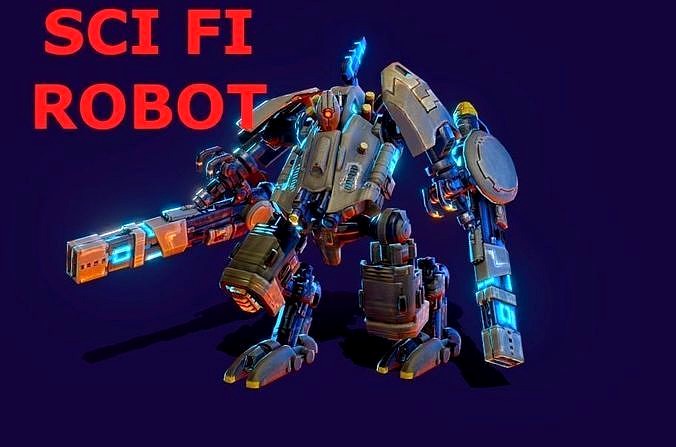
Sci-Fi Robot
by CG Trader
Last crawled date: 1 year, 9 months ago
19th century and earlier
The woman forged out of gold in Finnish myth The Kalevala (prehistoric folklore)
From 600 BC onward, legends of talking bronze and clay statues coming to life have been a regular occurrence in the works of classical authors such as Homer, Plato, Pindar, Tacitus, and Pliny. In Book 18 of the Iliad, Hephaestus the god of all mechanical arts, was assisted by two moving female statues made from gold – living young damsels, filled with minds and wisdoms. Another legend has Hephaestus being commanded by Zeus to create the first woman, Pandora, out of clay. The myth of Pygmalion, king of Cyprus, tells of a lonely man who sculpted his ideal woman, Galatea, from ivory, and promptly fell in love with her after the goddess Aphrodite brought her to life.
Talos, bronze giant Talos in Apollonius of Rhodes' Argonautica, 3rd century BCE
Brazen heads, attributed to numerous scholars involved in the introduction of Arabian science to medieval Europe, particularly Roger Bacon (13th century)
Golem – The legend of the Golem, an animated man of clay, is mentioned in the Talmud. (16th century)
Talus, iron man who mechanically helps Arthegall dispense justice in The Faerie Queene, the epic poem by Edmund Spenser, published in 1590
Olimpia, automaton who captivates the hero Nathanael so much he wishes to marry her in E. T. A. Hoffmann's Der Sandmann (1814)
Artificial human-like being created by Victor Frankenstein in Mary Shelley's Frankenstein (1818)
A mechanical man powered by steam in Edward S. Ellis' The Steam Man of the Prairies (1865)
Olympia in Act I of Jacques Offenbach's The Tales of Hoffmann, based on the Hoffmann story (1881)
A mechanical man run by electricity in Luis Senarens' Frank Reade and his Electric Man (1885)
Hadaly, a mechanical woman run by electricity, in Auguste Villiers de l'Isle-Adam's The Future Eve (1886) – the novel credited with popularizing the word android
The Brazen Android by William Douglas O'Connor. First appeared in The Atlantic Monthly, April 1891
The Dancing Partner by Jerome K.Jerome of Three Men in a Boat fame (1893)
The mecha-like tripods that the Martians use to conquer the Earth in The War of the Worlds by H.G. Wells (1897)
The New Frankenstein by Ernest Edward Kellett (1899), in which an inventor creates an anti-phonograph that according to the narrator can give the appropriate answer to every question I put, and installs in it a robotic female body that will guide herself, answer questions, talk and eat like a rational being, in fact, perform the part of a society lady. The android proves convincing enough to fool two suitors who wish to marry her.[2]
Early 1900s
The Metal Men automata designed by a Thomas Edison-like scientist in Gustave Le Rouge's La Conspiration des Milliardaires (1899–1900)
Tik-Tok in L. Frank Baum's Oz books, premiering in Ozma of Oz (1907), and in the movie Return to Oz, largely based on Ozma of Oz
A robot chess-player in Moxon's Master by Ambrose Bierce (first published in the San Francisco Examiner on 16 Aug. 1899)
In Gaston Leroux's La Poupée Sanglante (The Bloody Doll) and La Machine à Assassiner (The Murdering Machine), the lead character, Bénédict Masson, is wrongly accused of murder and guillotined. His brain is later attached to an automaton created by scientist Jacques Cotentin, and Masson goes on to track and punish those who caused his death.
1920s
R.U.R. (Rossum's Universal Robots) (1921), by Karel Čapek – credited with coining the term robot. In its original Czech, robota means forced labour, and is derived from rab, meaning slave. R.U.R. depicts the first elaborate depiction of a machine take-over. Čapek's robots can also be seen as the first androids: they are in fact organic.
Le Singe (The Monkey) (1925), by Maurice Renard and Albert Jean, imagined the creation of artificial lifeforms through the process of radiogenesis, a sort of human electrocopying or cloning process.
The Metal Giants (1926), by Edmond Hamilton, in which a computer brain who runs on atomic power creates an army of 300-foot-tall robots.
Metropolis (1927), by Thea von Harbou as novel, by Fritz Lang as film, character Maria and her robot double.
Automata (1929), by S. Fowler Wright, about machines doing the humans' jobs before wiping them out. robots character sci fi sci machine future futuristic mechanical body scifi giant giant robotss future robots game scifi game scifi movie us 2040 2050 2030 fi sci fi character
The woman forged out of gold in Finnish myth The Kalevala (prehistoric folklore)
From 600 BC onward, legends of talking bronze and clay statues coming to life have been a regular occurrence in the works of classical authors such as Homer, Plato, Pindar, Tacitus, and Pliny. In Book 18 of the Iliad, Hephaestus the god of all mechanical arts, was assisted by two moving female statues made from gold – living young damsels, filled with minds and wisdoms. Another legend has Hephaestus being commanded by Zeus to create the first woman, Pandora, out of clay. The myth of Pygmalion, king of Cyprus, tells of a lonely man who sculpted his ideal woman, Galatea, from ivory, and promptly fell in love with her after the goddess Aphrodite brought her to life.
Talos, bronze giant Talos in Apollonius of Rhodes' Argonautica, 3rd century BCE
Brazen heads, attributed to numerous scholars involved in the introduction of Arabian science to medieval Europe, particularly Roger Bacon (13th century)
Golem – The legend of the Golem, an animated man of clay, is mentioned in the Talmud. (16th century)
Talus, iron man who mechanically helps Arthegall dispense justice in The Faerie Queene, the epic poem by Edmund Spenser, published in 1590
Olimpia, automaton who captivates the hero Nathanael so much he wishes to marry her in E. T. A. Hoffmann's Der Sandmann (1814)
Artificial human-like being created by Victor Frankenstein in Mary Shelley's Frankenstein (1818)
A mechanical man powered by steam in Edward S. Ellis' The Steam Man of the Prairies (1865)
Olympia in Act I of Jacques Offenbach's The Tales of Hoffmann, based on the Hoffmann story (1881)
A mechanical man run by electricity in Luis Senarens' Frank Reade and his Electric Man (1885)
Hadaly, a mechanical woman run by electricity, in Auguste Villiers de l'Isle-Adam's The Future Eve (1886) – the novel credited with popularizing the word android
The Brazen Android by William Douglas O'Connor. First appeared in The Atlantic Monthly, April 1891
The Dancing Partner by Jerome K.Jerome of Three Men in a Boat fame (1893)
The mecha-like tripods that the Martians use to conquer the Earth in The War of the Worlds by H.G. Wells (1897)
The New Frankenstein by Ernest Edward Kellett (1899), in which an inventor creates an anti-phonograph that according to the narrator can give the appropriate answer to every question I put, and installs in it a robotic female body that will guide herself, answer questions, talk and eat like a rational being, in fact, perform the part of a society lady. The android proves convincing enough to fool two suitors who wish to marry her.[2]
Early 1900s
The Metal Men automata designed by a Thomas Edison-like scientist in Gustave Le Rouge's La Conspiration des Milliardaires (1899–1900)
Tik-Tok in L. Frank Baum's Oz books, premiering in Ozma of Oz (1907), and in the movie Return to Oz, largely based on Ozma of Oz
A robot chess-player in Moxon's Master by Ambrose Bierce (first published in the San Francisco Examiner on 16 Aug. 1899)
In Gaston Leroux's La Poupée Sanglante (The Bloody Doll) and La Machine à Assassiner (The Murdering Machine), the lead character, Bénédict Masson, is wrongly accused of murder and guillotined. His brain is later attached to an automaton created by scientist Jacques Cotentin, and Masson goes on to track and punish those who caused his death.
1920s
R.U.R. (Rossum's Universal Robots) (1921), by Karel Čapek – credited with coining the term robot. In its original Czech, robota means forced labour, and is derived from rab, meaning slave. R.U.R. depicts the first elaborate depiction of a machine take-over. Čapek's robots can also be seen as the first androids: they are in fact organic.
Le Singe (The Monkey) (1925), by Maurice Renard and Albert Jean, imagined the creation of artificial lifeforms through the process of radiogenesis, a sort of human electrocopying or cloning process.
The Metal Giants (1926), by Edmond Hamilton, in which a computer brain who runs on atomic power creates an army of 300-foot-tall robots.
Metropolis (1927), by Thea von Harbou as novel, by Fritz Lang as film, character Maria and her robot double.
Automata (1929), by S. Fowler Wright, about machines doing the humans' jobs before wiping them out. robots character sci fi sci machine future futuristic mechanical body scifi giant giant robotss future robots game scifi game scifi movie us 2040 2050 2030 fi sci fi character
Similar models
cg_trader
free
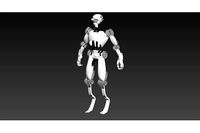
robot
...t robot scifi character machine futuristic mechanical android sci fi sci fi sci fi character android robot robot character sci fi
cg_trader
free

robot android
...robot android
cg trader
robot robot sci fi machine mechanical android mobile telephone future scifi fi sci science other
cg_trader
free
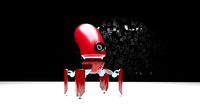
robot free
...cal android character droid test machine gun telephone electronics computer sci fi character android robot robot character sci fi
cg_trader
free
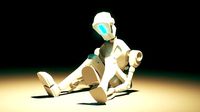
Robot
...chnology character futuristic body future mechanical sci fi sci fi sci fi character android robot man body robot character sci fi
cg_trader
free

Robot
...t bot machine sci fi mechanical gear android droid free 3d character sci fi sci fi character android robot robot character sci fi
cg_trader
$30
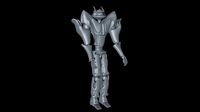
Gladiator Robot
... fi machine mechanical android character gladiator fighting infantry combat sci fi character android robot robot character sci fi
cg_trader
$4

Pet Robot Character
...trader
pet robot character robot character sci fi machine futuristic android machine gun body mechanical sci fi sci fi character
cg_trader
$8

mechanical claw
...droid finger technology technical design vehicle sci fi sci fi vehicle android robot mechanical arm robot arm robot design sci fi
cg_trader
free

robot thing
...c mechanical android body machine gun telephone mobile electronics computer sci fi character android robot robot character sci fi
cg_trader
$8
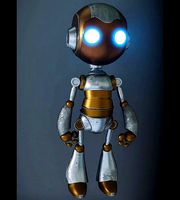
Robot
...odel robot art android character futuristic sci fi mechanical future sci fi sci fi character android robot robot character sci fi
Sci
turbosquid
$5

Sci fi collection (sci fi car, sci fi drone & sci fi corridor)
...& sci fi corridor) for download as 3ds, obj, c4d, and fbx on turbosquid: 3d models for games, architecture, videos. (1432046)
3d_ocean
$25
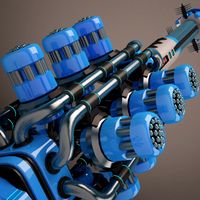
Sci-Fi Locator
...sci-fi locator
3docean
aerial wire antenna fi future locator sci sci-fi
3d model sci-fi locator by alekrazum vray materials
3d_export
$15
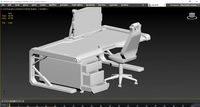
sci fi desktop
...sci fi desktop
3dexport
sci fi desktop
3d_export
$5
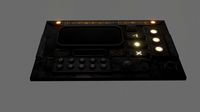
sci-fi tech
...sci-fi tech
3dexport
sci-fi asset
3d_export
$5

sci fi corridor
...sci fi corridor
3dexport
sci fi corridor
3d_export
$5

sci-fi motorcycle
...sci-fi motorcycle
3dexport
sci fi motorcycle
3d_export
free
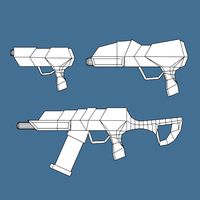
sci-fi pack
...sci-fi pack
3dexport
sci-fi pack
3d_export
free

sci-fi wires
...sci-fi wires
3dexport
sci fi wires. can be as a stand alone sci fi building or as a part of architectural complex.
3d_export
$6

Sci-fi rifle
...sci-fi rifle
3dexport
a rifle for sci-fi games
3d_export
$17
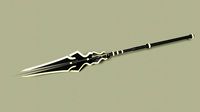
sci fi spear
...sci fi spear
3dexport
low poly sci fi spear
Fi
3ddd
$1

Fies
...fies
3ddd
смеситель , fies
моделил с каталога
3ddd
$1

wi-fi
...wi-fi
3ddd
wi fi
wi-fi
turbosquid
$5

Sci fi collection (sci fi car, sci fi drone & sci fi corridor)
...& sci fi corridor) for download as 3ds, obj, c4d, and fbx on turbosquid: 3d models for games, architecture, videos. (1432046)
3d_ocean
$9

Hi-Fi
...hi-fi
3docean
hi-fi high-tech highpoly music
i reproduced my hi-fi with blender and rendered with yafaray !
3d_ocean
$25

Sci-Fi Locator
...sci-fi locator
3docean
aerial wire antenna fi future locator sci sci-fi
3d model sci-fi locator by alekrazum vray materials
3d_export
$15

sci fi desktop
...sci fi desktop
3dexport
sci fi desktop
3d_export
$5

Wi-Fi Jammer
...wi-fi jammer
3dexport
глушилка wi-fi
3d_export
$5

sci-fi tech
...sci-fi tech
3dexport
sci-fi asset
3d_export
$5

sci fi corridor
...sci fi corridor
3dexport
sci fi corridor
3d_export
$5

wi-fi adapter
...wi-fi adapter
3dexport
wi-fi for pc!
Robot
3d_ocean
$20
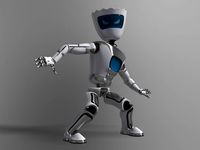
Robot
...robot
3docean
character metal robot robot robotic white
robot model for 3dsmax 2009 and greater
3d_ocean
$45
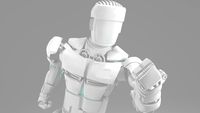
Robot
...robot
3docean
fighing machine robot
a fighting robot from the scrapyard.
3d_ocean
$18
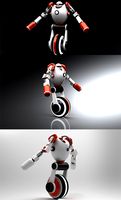
Robot
...robot
3docean
machin robot science fiction
high poly robot.
3d_export
$7

Robot
...robot
3dexport
robot
3d_export
$5
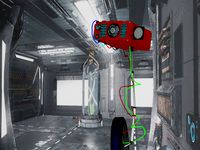
robot
...robot
3dexport
robot
3d_export
free

Robot
...robot
3dexport
robot
turbosquid
$10
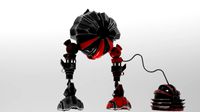
Robot/ Alien Robot
...
royalty free 3d model robot/ alien robot for download as max on turbosquid: 3d models for games, architecture, videos. (1442828)
3d_export
$5

robot
...robot
3dexport
robot in blender
3ddd
$1

robot
...robot
3ddd
робот
robot
3ddd
$1
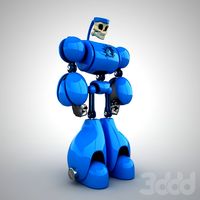
Robot
...robot
3ddd
робот
robot
